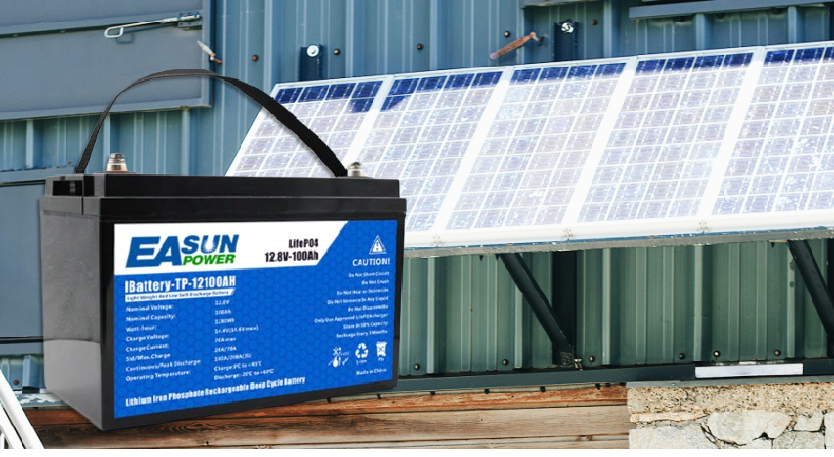
How to Choose the Right LiFePO4 Battery for Your Solar System
Choosing the right LiFePO4 battery for a solar system requires careful consideration of several technical and practical factors. This guide outlines the key criteria to ensure that the battery you select optimally supports your energy needs, enhances system efficiency, and maximizes the investment in your solar setup.
1. Energy Storage Capacity
To accurately determine the required storage capacity for your LiFePO4 battery, start by calculating the daily energy usage of your home or system. This involves adding up the energy consumed by each appliance and device over a 24-hour period, often measured in kilowatt-hours (kWh). Choose a battery with a capacity that not only meets this daily requirement but also has some reserve to account for less sunny days or increased usage. Selecting the correct capacity is crucial as it minimizes the number of charge and discharge cycles the battery undergoes daily, thereby enhancing its longevity and maintaining efficiency over time.

2. Voltage Compatibility
It's important that the voltage of the LiFePO4 battery aligns with the operating voltage requirements of your solar system's components, such as the inverter and charge controller. Mismatched voltage can result in underperformance and potential damage to the system. For example, if your system operates at 24 volts, using a 12-volt battery without a suitable step-up converter can cause significant energy losses and might even harm the battery or the system’s electronics. Always consult the system's specifications or a professional installer to ensure compatibility.
3. Battery Management System (BMS)
A Battery Management System is integral to maintaining the health and efficiency of a LiFePO4 battery. A well-designed BMS monitors each cell within the battery pack to ensure they are charged and discharged evenly, which is vital for maximizing the battery's lifespan and performance. The BMS also safeguards the battery from various potential issues such as overcharging, deep discharging, and overheating. This system contributes significantly to overall safety, balancing the cells' charge states and mitigating risks of failure, making it a critical feature for reliable and durable battery operation.
4. Cycle Life
The cycle life of a battery is a key determinant of its durability and overall value. LiFePO4 batteries are known for their robust cycle life, often capable of enduring thousands of full charge and discharge cycles before their capacity begins to diminish significantly. For instance, many LiFePO4 batteries are rated for up to 5,000 cycles at 80% depth of discharge (DoD), meaning they can be used extensively for many years without substantial loss in storage capacity. This makes them a cost-effective choice for solar systems where frequent cycling is common, particularly in off-grid or backup power applications. When selecting a battery, consider your specific usage patterns and opt for a model that offers a high cycle life relative to these needs to ensure optimal long-term performance and reduced total cost of ownership.

5. Physical Size and Weight
The physical characteristics of a battery, such as its size and weight, are crucial for integration into existing spaces and systems. LiFePO4 batteries are relatively lightweight and compact compared to other types of batteries like lead-acid, which makes them easier to install and manage, especially in constrained spaces or in applications where weight is a critical factor, such as in mobile or marine installations. Always measure the available space you have for the battery installation and compare it with the dimensions and weight specifications provided by the manufacturer. This ensures a fit that requires minimal adjustments to your setup, facilitating easier and potentially lower-cost installation.
6. Temperature Resilience
LiFePO4 batteries excel in diverse temperature conditions, which is a significant advantage for solar power applications that may experience varied environmental temperatures. These batteries maintain performance within a broad operational temperature range, typically from about -20°C to 60°C. They are inherently stable and less susceptible to thermal runaway, a condition where excessive heat generation leads to accelerated degradation or even failure. This stability not only enhances safety but also ensures consistent performance even under harsh or fluctuating temperatures. For installations in areas experiencing extreme temperatures, opting for LiFePO4 batteries can lead to more reliable and efficient energy storage.
7. Warranty and Manufacturer Support
The warranty and the level of support provided by the manufacturer are crucial indicators of the quality and reliability of a LiFePO4 battery. A comprehensive warranty not only covers potential defects but also underscores the manufacturer's confidence in their product's performance over time. Effective customer support should include accessible technical assistance and prompt resolution of any issues. When evaluating warranties, look for terms that cover a significant lifespan of the battery and include clear, manageable conditions. This support can greatly influence the operational uptime of your solar system by ensuring any challenges are quickly addressed without incurring substantial extra costs.
Conclusion
Selecting the appropriate LiFePO4 battery is crucial for maximizing the efficiency and longevity of your solar power system. By thoroughly evaluating factors such as energy storage capacity, voltage compatibility, the presence of a battery management system, cycle life, physical dimensions, temperature resilience, and the warranty and support offered by the manufacturer, you can have a solar system that performs reliably over its lifespan.

Een opmerking achterlaten